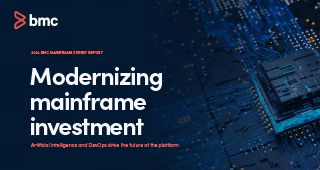When someone brings up DevOps … I immediately think about a military operation that I am preparing for.
If you search on DevOps, you will find lots of similar links to navigate. Many of the links will tell you just what DevOps is, putting a spin to what they are selling, writing about, or their successful implementation story. There are many opportunities to take classes, buy software, and understand how to monitor. To get down to brass tacks, DevOps combines different techniques to increase your company’s ability to deliver applications and services faster to your customers or end users. It’s all about developing a better way to build, test, and eventually release software.
DevOps and Database Administration
As I apply camouflage and get ready to attack how mainframe database maintenance fits into DevOps. I want to take a broader look at DevOps data base administration.
Database administration combined with DevOps is just an extension of what we have been doing for a long time on the mainframe. In the first thirty years BMC administration tools were targeted at production – how we got application driven changes and data conversions into production safely, automated, and with high availability. “Time to market” was the value statement for customers moving forward with the BMC Administration products. And over those thirty years BMC achieved that success via product enhancements that we could hang our combat helmets on.
Now the emphasis has moved to the Development life cycle and how we can provide the same administration service in the app/dev environments. To put it in perspective, it is more work, more process, and more environments than production – adding a level of risk that was not there in the past (always there for production). Database maintenance and administration is now a key component of what DevOps is attempting to address. If we need to get changes into the many testing environments to support the agile development with operational discipline, a Db2 administration tool like BMC Db2 Change Manager has to determine those changes, implement, and provide fallback each and every time it is called upon to do so.
In the BMC database administration arena, the products are built to scale to those development environments. One customer I work with has 130 separate Db2 testing environments for one application. Getting changes through those environments is a challenge but BMC can support that via its advanced features. This customer has written their own customer application on top of the BMC code to manage the process. There are many examples of how customers have used the BMC products to address business agility by starting with BMC Change Manager that can customize a solution to meet their needs.
Like many times in IT, I would say database administration support for DevOps is not new. Database administration tools were the DevOps of the past. BMC had the vision to put the flexibility and support in their tools to march into any DevOps situation and conquer it. The day is here where I can go back to those DBAs and tell them all the complexity in the BMC tools might not have been needed 25 years ago, but it is certainly needed today.
Moving forward with DevOps
BMC continues to move forward with database maintenance and administration. As responsibilities shift because of the required application continuous delivery, BMC is providing software to allow more self-service opportunities for companies. BMC Db2 Workbench brings the mainframe to IT professionals, so database administration can be a collaborative mission and the common interface that supports better understanding and success.
I’m just glad I can add DevOps to my resume … but I guess I should have done that years ago.







